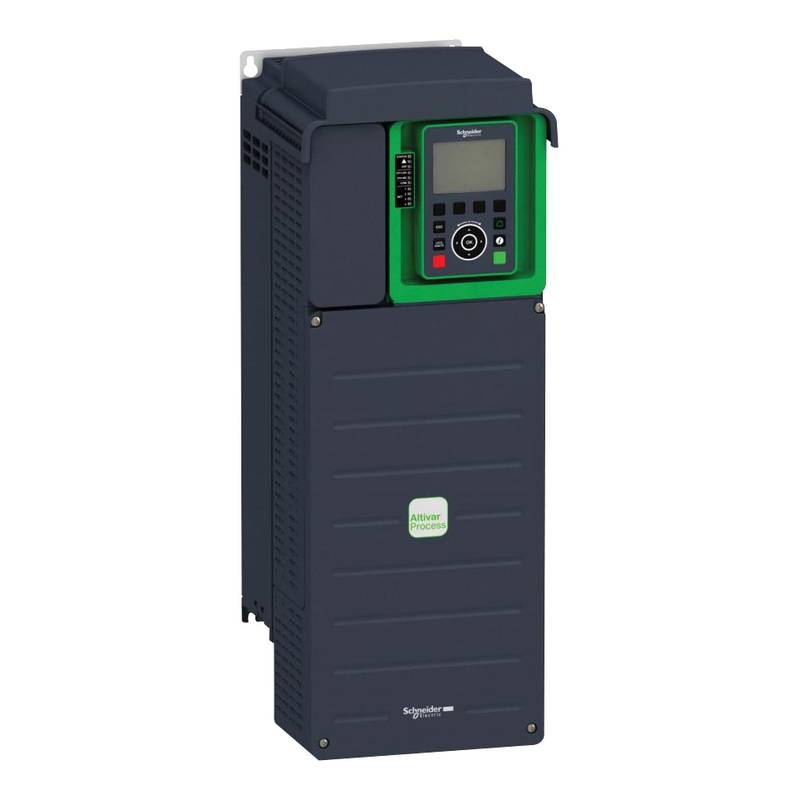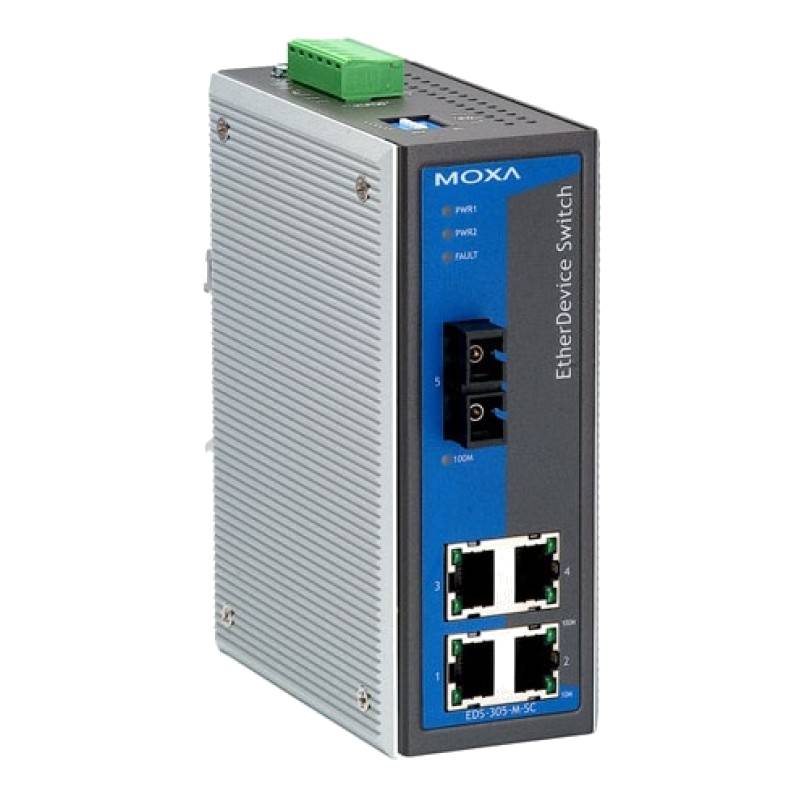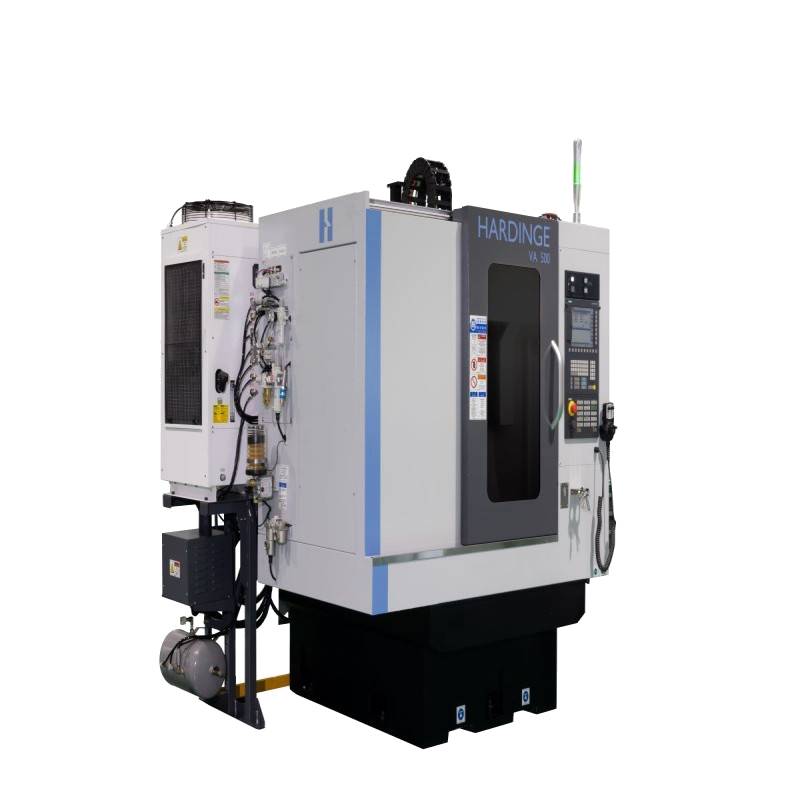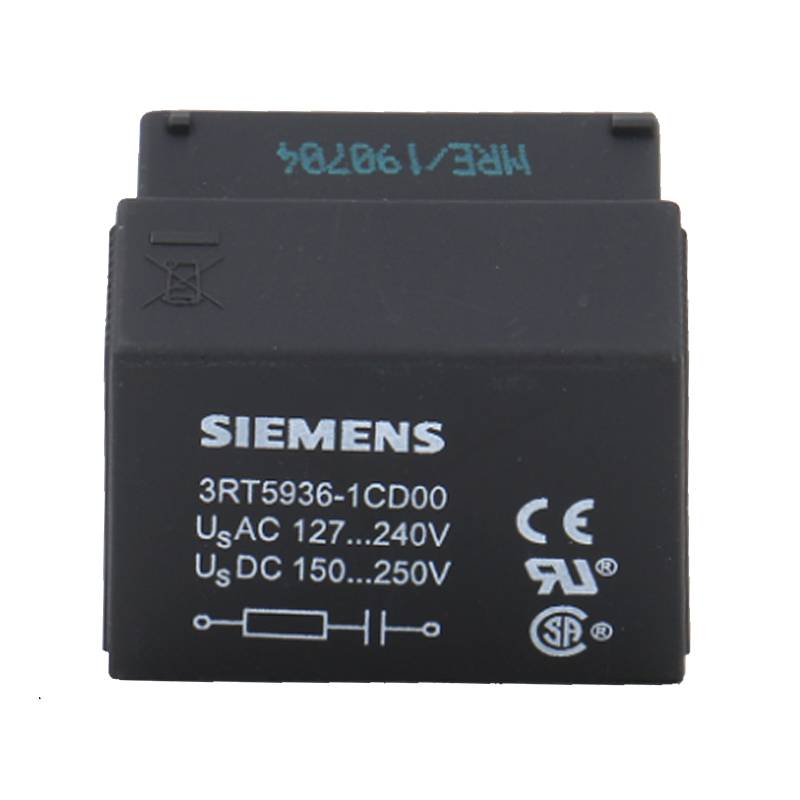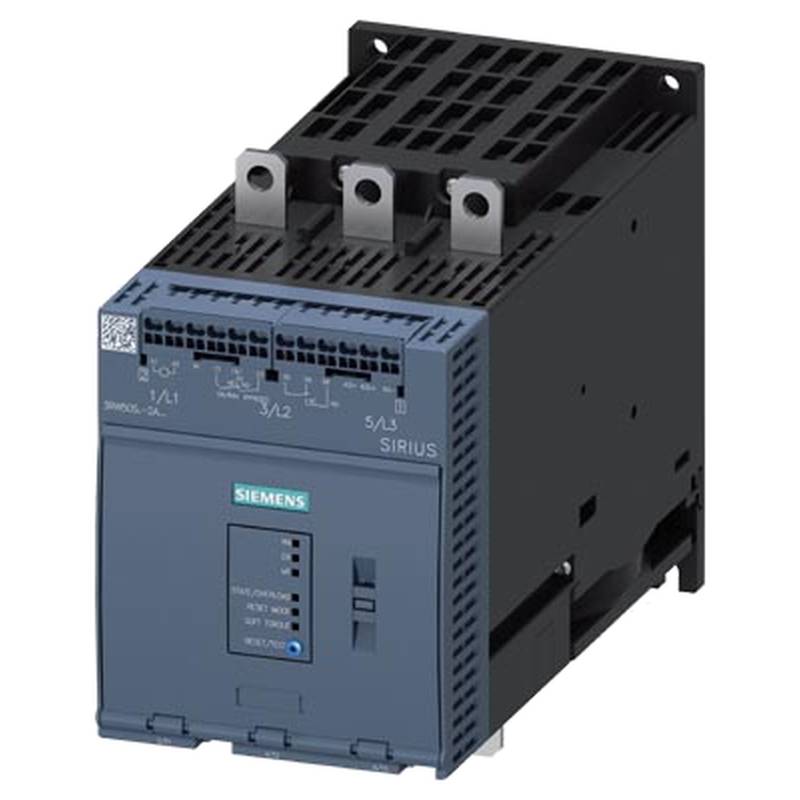
The Schneider Electric Altivar Process ATV630D30N4 is a robust and reliable variable frequency drive (VFD) engineered for demanding industrial applications. This 30kW, 53.3A IP21-rated controller is designed to optimize motor performance, enhance energy efficiency, and ensure seamless operation in environments ranging from water management to material handling. Its core advantages lie in its advanced control algorithms, integrated diagnostics, and robust construction, positioning it as a leading solution for variable torque applications.
Product Specifications
| Parameter | Value |
| :-------------------- | :------------------------------------ |
| Product Name | Altivar Process ATV630 |
| Product Series | ATV600 |
| Drive Type | Variable Frequency Drive |
| Rated Power | 30 kW (40 HP) |
| Rated Current | 53.3 A |
| Voltage Rating | 380-465 V AC (3 Phase) |
| Enclosure Type | IP21 |
| Mounting Type | Wall-mounted |
| Dimensions (HxWxD) | 595 mm x 310 mm x 270 mm |
| Weight | 23 kg |
| Operating Temperature | -15°C to +50°C (without derating) |
| Harmonic Mitigation | Integrated filter (EMC Class C2) |
| Communication Options | Modbus, EtherNet/IP, Profibus DP, etc. |
Core Features & Market Positioning
The Schneider ATV630D30N4 distinguishes itself through its comprehensive feature set tailored for process industries. Its integrated harmonic filtering, complying with EMC Class C2 standards, significantly reduces electromagnetic interference, crucial for maintaining system integrity in sensitive environments. The drive's advanced motor control technology, including sensorless vector control and permanent magnet motor control, allows for precise speed and torque regulation, leading to improved process control and reduced energy consumption. Market positioning is strong in sectors demanding high reliability and energy efficiency, such as water and wastewater treatment, oil and gas, and mining, where downtime is costly and energy optimization is paramount. The integrated safety functions, such as Safe Torque Off (STO), further enhance its value proposition by simplifying safety integration into plant machinery.
Key Application Scenarios
This frequency drive is particularly well-suited for variable torque applications where precise flow or speed control is essential. In water and wastewater treatment plants, it excels at managing pump speeds to maintain consistent pressure and flow rates, thereby minimizing energy usage and wear on equipment. For material handling systems, such as conveyors and cranes, the ATV630D30N4 provides smooth acceleration and deceleration, protecting the load and improving operational efficiency. Its robust design also makes it a reliable choice for HVAC systems in large commercial buildings, regulating fan and pump speeds to optimize comfort and reduce energy costs. The drive's adaptability to different motor types, including asynchronous and permanent magnet motors, broadens its applicability across various industrial machinery.
Practical System Integration Guidance
Integrating the Schneider ATV630D30N4 into existing industrial systems is streamlined due to its user-friendly interface and versatile communication capabilities. Proper installation requires ensuring adequate ventilation and adhering to wiring guidelines for power and control circuits to prevent electrical noise and ensure safety. The drive supports various communication protocols like Modbus, EtherNet/IP, and Profibus DP, allowing for seamless integration into SCADA and PLC systems for centralized monitoring and control. Initial commissioning involves parameter setup, which can be accomplished via the intuitive local control panel or through PC-based software like SoMove. Key parameters to configure include motor data, ramp times, and protection thresholds to match the specific application requirements and motor characteristics.
Operation and Risk Mitigation
Operating the ATV630D30N4 involves understanding its comprehensive diagnostic capabilities and safety features. The integrated event log and diagnostic tools aid in quickly identifying potential issues, minimizing downtime. The Safe Torque Off (STO) function is a critical safety feature that prevents unexpected motor start-up, ensuring personnel safety during maintenance or emergency situations. Common troubleshooting may involve checking for overcurrent or overvoltage faults, which can often be resolved by verifying motor parameters, load conditions, or power supply stability. Adhering to Schneider Electric's recommended operating procedures and maintenance schedules is crucial for mitigating risks and ensuring the longevity of the VFD.
Scalability & Long-Term Value
The Altivar Process ATV630 series offers significant scalability and long-term value for industrial operations. Its modular design and compatibility with Schneider Electric's EcoStruxure™ platform enable seamless integration with IIoT solutions, facilitating predictive maintenance and remote monitoring. This integration allows for data-driven decision-making, further optimizing operational efficiency and reducing costs. The drive's ability to control a wide range of motor types and its flexible communication options ensure it remains a relevant and valuable component even as plant infrastructure evolves. Upgrade paths are typically straightforward, allowing for replacement with newer models within the same product family with minimal disruption to existing control systems.
Frequently Asked Questions (FAQs)
What is the primary function of the Schneider ATV630D30N4?
The primary function is to control the speed and torque of AC electric motors. It achieves this by varying the frequency and voltage supplied to the motor. This precise control leads to significant energy savings and improved process efficiency in various industrial applications.
This VFD offers advanced motor control algorithms for optimal performance. It is designed for demanding industrial environments, ensuring reliability and longevity. Its robust construction and IP21 rating make it suitable for diverse operational conditions.
The ATV630D30N4 is crucial for applications requiring variable speed operation, such as pumps, fans, and conveyors. It allows for soft starts and stops, reducing mechanical stress on connected equipment.
What are the main advantages of using the Schneider ATV630D30N4?
Key advantages include substantial energy savings through precise speed control. It also enhances process optimization and equipment longevity by reducing mechanical stress. Its integrated safety features, like STO, simplify compliance.
The drive offers robust harmonic mitigation, reducing electromagnetic interference. This ensures reliable operation in sensitive electrical environments. Its diagnostic tools facilitate quick troubleshooting and minimize downtime.
Its versatility in communication protocols allows for easy integration into existing automation systems. This enables centralized control and data monitoring for enhanced operational visibility.
Can the Schneider ATV630D30N4 be used with single-phase motors?
No, the Schneider ATV630D30N4 is designed specifically for three-phase AC motors. It requires a three-phase power supply input and outputs a variable three-phase voltage and frequency to the motor.
Using this drive with a single-phase motor would likely result in motor damage or drive malfunction. Single-phase motors require different starting mechanisms and power characteristics than those provided by a VFD.
For applications requiring single-phase motor control, Schneider Electric offers different VFD models specifically designed for such requirements. Always consult the product datasheets for compatibility.
What is the significance of the IP21 rating on the ATV630D30N4?
The IP21 rating indicates the drive's level of protection against solid objects and water. "2" signifies protection against solid objects larger than 12.5mm (e.g., tools), and "1" indicates protection against vertically falling water droplets.
This rating means the drive can withstand a certain amount of moisture and dust ingress but is not suitable for direct water exposure or very harsh, dusty environments without additional protection. It's typically suitable for indoor, clean industrial settings.
For applications in environments with higher risks of water spray or dust, consider VFDs with higher IP ratings (e.g., IP54 or IP66) or ensure adequate enclosure and protection measures are in place.
How does the ATV630D30N4 contribute to energy efficiency?
It significantly boosts energy efficiency by allowing motor speed to be adjusted to match the actual demand. Running motors at lower speeds drastically reduces power consumption compared to running them at full speed and using mechanical throttling.
For example, reducing a pump's speed by 20% can cut energy consumption by nearly 50%. The ATV630D30N4’s advanced control precisely manages this speed reduction.
Furthermore, features like sleep mode and eco-mode actively work to minimize energy usage during periods of low demand, maximizing overall system efficiency and reducing operational costs.
What communication protocols does the ATV630D30N4 support?
The drive supports a wide array of industrial communication protocols for seamless integration. Common options include Modbus serial (RS-485) and Modbus TCP/IP over Ethernet.
It also often supports fieldbus protocols such as Profibus DP, DeviceNet, and EtherNet/IP, allowing it to interface with various PLC and DCS systems. Specific options may depend on installed communication cards.
This extensive protocol support ensures flexibility in connecting the drive to existing automation architectures, enabling centralized control, monitoring, and diagnostics within an industrial network.
What are the key safety features of the ATV630D30N4?
A critical safety feature is the integrated Safe Torque Off (STO) function. This function reliably prevents the drive from generating torque, effectively stopping the motor and ensuring it cannot restart unexpectedly.
The STO function is designed to meet stringent safety standards (e.g., SIL 3 / PLe) and is crucial for safeguarding personnel during maintenance or emergency situations. It simplifies safety integration into machine designs.
Other safety aspects include comprehensive motor and drive protection functions, such as overcurrent, overvoltage, undervoltage, and thermal overload protection, which prevent damage to the equipment and ensure operational safety.
How is the ATV630D30N4 installed and commissioned?
Installation involves mounting the drive in a suitable location with adequate ventilation, following Schneider Electric's wiring diagrams for power and control connections. Proper grounding is essential for safety and performance.
Commissioning typically begins with entering essential motor parameters (e.g., voltage, current, frequency, power) into the drive's configuration menu. This ensures optimal motor performance and protection.
Parameter setup can be done via the local keypad, or using PC software like SoMove for more complex configurations and faster commissioning, especially for multiple drives.
What kind of motors can be controlled by the ATV630D30N4?
The ATV630D30N4 is designed to control standard asynchronous (induction) motors efficiently. It offers advanced control modes for these motors, including V/f control and sensorless vector control.
It also supports the control of permanent magnet synchronous motors (PMSM). This capability enhances efficiency and performance in applications where PMSM motors are preferred for their superior energy characteristics.
The drive's flexibility allows users to select the most appropriate motor type and control method for their specific application, maximizing performance and energy savings.
What are common troubleshooting steps for the ATV630D30N4?
Begin by checking the drive's fault code display and referring to the user manual for the specific error meaning. Common faults include overcurrent, overvoltage, undervoltage, and motor thermal overload.
Verify that motor parameters are correctly entered and that the motor nameplate data matches the drive configuration. Ensure the load is not exceeding the drive's or motor's rated capacity.
Inspect wiring connections for looseness or damage, and confirm the power supply voltage is within the drive's acceptable range. Environmental factors like temperature and ventilation should also be checked.














